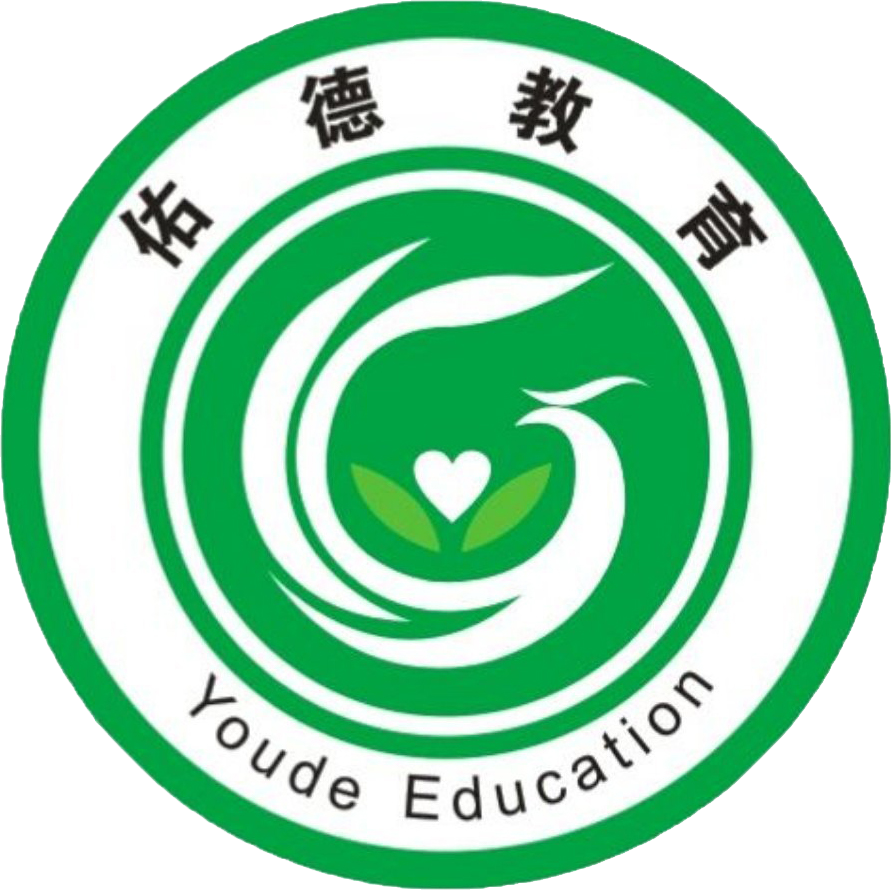
Respect Life, Uphold Virtue“Diagnosis and Treatment” — The Eight Principles of Differentiation
The Eight Principles of Differentiation (Ba Gang Bian Zheng) is the overarching framework for various diagnostic methods in Traditional Chinese Medicine (TCM).
The process of differentiation is based on theories of the organs (zang-fu), meridians (jingluo), qi (vital energy), blood (xue), body fluids (jinye), and disease etiology. It involves a comprehensive analysis, synthesis, reasoning, and judgment of the symptoms and signs collected through the four diagnostic methods: observation (wang), listening and smelling (wen), inquiry (wen), and palpation (qie), to understand the disease and make an accurate diagnosis.
Differentiation and treatment are two crucial interrelated aspects of TCM theory, methods, formulas, and medicines in clinical practice. Differentiation is the understanding of the disease, while treatment refers to the corresponding therapeutic measures and methods taken based on the diagnosis. Differentiation serves as the premise and basis for treatment, while treatment is the objective and an objective standard for verifying the correctness of differentiation.
“Symptom” (zheng) refers to individual symptoms, which are recognized similarly in both TCM and Western medicine, such as headache, fever, cough, palpitations, nausea, etc.
“Disease” (bing) refers to the name of the illness. In TCM, only a few disease names correspond with those in Western medicine, such as measles, diphtheria, tetanus, asthma, dysentery, and heat stroke, while most terms differ. Due to the differences in theoretical systems, the understanding of diseases varies. Western medicine’s understanding is based on human anatomy and pathophysiology, with clinical diagnosis relying on the patient’s subjective symptoms, physical examination, and laboratory tests. TCM views disease as a result of the imbalance of yin and yang in the body, with clinical differentiation primarily based on the patient’s symptoms and signs (such as tongue and pulse diagnosis). It is not always necessary to determine the disease name but rather to clarify the “pattern” (zheng).
“Pattern” (zheng) is an abbreviation for evidence and syndrome. It is not merely a symptom or subjective feeling but a group of syndromes, representing TCM’s diagnostic approach to diseases. A “pattern” is a set of specific clinical manifestations (symptoms, signs, etc.) that encompasses the etiology, location of the disease, nature of the disease, and the comparative strength of the righteous and evil forces. It is a comprehensive concept derived from analyzing symptoms and signs, summarizing into a concept that better explains the essence of the disease.
TCM differentiation has been developed through long-term clinical practice, employing various methods, primarily including the Eight Principles of Differentiation, etiology differentiation, qi and blood differentiation, organ differentiation, defensive qi, nutritive qi, and blood differentiation, triple burner differentiation, and six meridian differentiation. Among these, the Eight Principles of Differentiation is the overarching framework.
The Eight Principles of Differentiation is based on the materials obtained from the four diagnostic methods, conducting a comprehensive analysis to explore the nature of the disease, the location of the pathological changes, the severity of the disease, the strength of the body’s response, and the comparative strength of the righteous and evil forces, summarizing into eight categories of syndromes: yin, yang, exterior, interior, cold, heat, deficiency, and excess. This is a fundamental method of differentiation in TCM, encompassing various differentiation methods’ commonalities while simplifying complex disease presentations.Although the manifestations of diseases are extremely complex, they can generally be categorized into the Eight Principles. The overall categories include yin syndromes and yang syndromes; the depth of the disease can be classified as exterior or interior; the imbalance of yin and yang, with yang excess or yin deficiency leading to heat syndromes, and yang deficiency or yin excess leading to cold syndromes; the strength of the evil and righteous forces, with excess evil termed as excess syndrome and deficient righteous termed as deficiency syndrome. Therefore, the Eight Principles of Differentiation analyzes the myriad changes in diseases according to the simple dichotomies of exterior and interior, cold and heat, deficiency and excess, yin and yang, revealing the contradictions within the pathological changes, thus grasping the nature of the disease in terms of exterior or interior, cold or heat, deficiency or excess, and belonging to yin or yang. This embodies the fundamental spirit of the Eight Principles.

“
The Origins of the Eight Principles
”
The Eight Principles of Differentiation is established after mastering the differentiation materials, analyzing various aspects such as the depth of the disease, the nature of the pathogenic factors, and the strength of the body’s righteous qi, summarizing into eight different syndromes, known as the Eight Principles of Differentiation. The Eight Principles are yin, yang, exterior, interior, cold, heat, deficiency, and excess. They are one of the theoretical foundations for differentiation and treatment. The Eight Principles originated from the “Huangdi Neijing” (Yellow Emperor’s Inner Canon). Although the term “Eight Principles” is not explicitly mentioned, the content related to the Eight Principles is scattered throughout the text, establishing their inter-differentiation relationships. In the “Shanghan Lun” (Treatise on Cold Damage), the Eight Principles are specifically applied to differentiate and treat diseases. For instance, Fang Yu mentioned in “Yilin Shengmo” that “Zhongjing treated cold damage with three hundred ninety-seven methods and one hundred thirteen formulas… Ultimately, the main principles are nothing more than exterior-interior, deficiency-excess, yin-yang, cold-heat, which are the eight principles.” By the Ming Dynasty, the concept and content of the Eight Principles of Differentiation had been recognized and accepted by many physicians. For example, Tao Jiean in “Shanghan Liushu: The Secret of Cold Damage” stated: “Understanding the true nature of yin-yang, exterior-interior, cold-heat, deficiency-excess, and reviewing the methods of sweating, purging, warming, and harmonizing, will ensure no errors in treatment.” In modern times, Zhu Weiju in “Shanghan Zhi Nan” stated: “The so-called ‘Eight Principles’ are yin, yang, exterior, interior, cold, heat, deficiency, and excess. Ancient physicians observed various disease symptoms and categorized them into eight fundamental principles, simplifying complexity to respond to endless variations.” This was the formal introduction of the term “Eight Principles.” The second edition of the TCM Diagnosis textbook officially included the Eight Principles as a dedicated chapter for discussion, thus popularizing the content of the Eight Principles of Differentiation nationwide.“
The Eight Principles
”Although the manifestations of diseases are extremely complex, they can generally be summarized using the Eight Principles. The Eight Principles are abstracted from the individuality of various specific syndromes, embodying universal laws that can categorize intricate clinical manifestations into exterior syndromes, interior syndromes, cold syndromes, heat syndromes, deficiency syndromes, and excess syndromes, further summarizing into two major categories: yin syndromes and yang syndromes. This means that for any syndrome, from a general perspective, it cannot escape being classified as either exterior or interior; from a fundamental nature perspective, it can generally be distinguished as cold or heat; from the relationship of the struggle between evil and righteous forces, it primarily reflects as excess or deficiency; from the category of syndromes, it can all belong to either yin or yang. Therefore, the Eight Principles of Differentiation is the guiding principle for TCM differentiation, a method used to analyze the commonalities of various diseases, playing a role in simplifying complexity and highlighting key points during the diagnostic process.
Depth of Disease ————————— Exterior Syndrome, Interior Syndrome
Nature of Disease ————————— Cold Syndrome, Heat Syndrome
Strength of Evil and Righteous Forces ————————— Deficiency Syndrome, Excess Syndrome
Category of Syndromes ————————— Yin Syndrome, Yang Syndrome
Additionally, yin and yang serve as the overarching principles, meaning that interior deficiency syndromes and cold syndromes can be classified as yin syndromes, while exterior excess syndromes and heat syndromes can be classified as yang syndromes. 1. First, Differentiation of Exterior and Interior Exterior and interior indicate the depth of the pathological changes and the severity of the disease. Generally speaking, the skin, muscles, and superficial meridians belong to the exterior; the organs, blood vessels, bone marrow, and internal meridians belong to the interior. Exterior syndromes indicate that the disease is superficial and mild; interior syndromes indicate that the disease is deep and severe.
Exterior syndromes are those with symptoms located superficially on the skin. Generally, they occur when external pathogenic factors invade the body through the skin and nose, leading to a series of symptoms where the righteous qi (wei qi) resists the evil. These are often seen in the initial stages of external contracted diseases. Exterior syndromes are characterized by sudden onset, short duration, superficial location, and mild severity. They are commonly seen in the early stages of external febrile diseases, such as upper respiratory infections, acute infectious diseases, and other initial stages of infectious diseases.
Main symptoms include fever and chills (or aversion to wind), headache, thin white tongue coating, and floating pulse as the basic symptoms, often accompanied by symptoms such as body aches, nasal congestion, and cough.
Due to the differences in the nature of external pathogenic factors (cold or heat) and the varying strength of the body’s righteous qi in resisting these factors, exterior syndromes can further be divided into exterior cold, exterior heat, exterior deficiency, and exterior excess syndromes.
2. Differentiation of Cold and Heat Distinguishing between exterior cold and exterior heat syndromes is based on the severity of chills and fever, as well as tongue and pulse characteristics. Exterior cold syndrome is characterized by severe chills and mild fever, while exterior heat syndrome is characterized by severe fever and mild chills. In exterior cold syndrome, the tongue coating is thin, white, and moist, with a floating and tight pulse; in exterior heat syndrome, the tongue coating is thin, white, and not moist, with a floating and rapid pulse. Additionally, the wind-cold evil can become stagnant and transform into heat, leading to a transformation from exterior cold syndrome to exterior heat syndrome. Once the external evil invades the superficial layer, it can easily penetrate inward and transform into heat, causing exterior cold syndrome (or exterior heat syndrome) to evolve into interior heat syndrome. 3. Differentiation of Deficiency and Excess Deficiency and excess refer to the strength of the body’s righteous qi and the severity of the pathogenic factors. Generally, deficiency indicates insufficient righteous qi, and deficiency syndrome manifests as symptoms of insufficient righteous qi, while excess indicates excessive pathogenic qi, and excess syndrome manifests as symptoms of excessive pathogenic qi. The “Suwen: Discussion on Deficiency and Excess” states: “When the evil qi is excessive, it is excess; when the essence qi is depleted, it is deficiency.” From the perspective of the comparative strength of the righteous and evil forces, deficiency syndrome, while characterized by insufficient righteous qi, does not necessarily indicate strong evil qi; excess syndrome, while characterized by excessive evil qi, does not necessarily indicate weakened righteous qi, reflecting a fierce struggle between the righteous and evil forces. Distinguishing between deficiency and excess is the basis for treatment, determining whether to tonify the righteous (tonify deficiency) or to attack the evil (drain excess), hence the saying “tonify the deficient, drain the excess.” 4. Differentiation of Yin and Yang Yin and yang are the two principles for distinguishing the nature of diseases, serving as the overarching principle of the Eight Principles. This encompasses the differentiation of exterior and interior, cold and heat, and deficiency and excess. The “Lue Jing: Yin and Yang” states: “In human diseases, there must be a basis, either rooted in yin or in yang. Although the changes in diseases are numerous, their basis is one,” indicating that while symptoms may be complex and varied, they ultimately fall into the two major categories of yin and yang. Therefore, it is essential to first determine whether the disease belongs to yin or yang, as generally, exterior, excess, and heat syndromes belong to yang, while interior, deficiency, and cold syndromes belong to yin. Clinically, yin syndromes often refer to interior deficiency cold syndromes, while yang syndromes often refer to interior excess heat syndromes. “
The Interrelationship of the Eight Principles
”The Eight Principles of Differentiation prominently reflect the characteristics of TCM’s differentiation thinking. Although the Eight Principles primarily categorize various syndromes into four pairs of guiding syndromes, each pair has clinical manifestations that distinguish one from the other, this does not imply that clinical syndromes are merely divided into eight isolated and unrelated areas with clear boundaries. Instead, the Eight Principles are interrelated, with distinctions, transformations, connections, and complexities among them. Therefore, in understanding the Eight Principles of Differentiation, one must grasp the basic syndromes of the Eight Principles while also being familiar with the various compound syndrome types formed by the inter-combination of the Eight Principles.The relationship of coexisting syndromes refers to the simultaneous appearance of symptoms from two or more principles. For example, in the early stages of an external febrile disease, if exterior syndrome is present, further differentiation is needed to determine whether it is coexisting with cold or heat, which can be classified as exterior cold syndrome or exterior heat syndrome. In cases of prolonged illness, deficiency syndromes may require further differentiation to determine whether they are deficiency cold or deficiency heat syndromes. The emergence of coexisting syndromes should not be viewed equally; rather, there is a primary and secondary relationship. For instance, both exterior cold and exterior heat syndromes are primarily exterior syndromes, with cold or heat being secondary to the exterior syndrome, thus treatment should primarily focus on resolving the exterior, using either warming or cooling methods. Similarly, deficiency cold and deficiency heat syndromes are primarily deficiency syndromes, with cold or heat being secondary, thus treatment should primarily focus on tonifying deficiency, using either yang tonification or yin nourishing methods. When exterior and interior syndromes coexist, which syndrome takes precedence should be determined based on the specific condition. The transformation relationship refers to the symptoms of one principle transforming into its opposite. The relationships between exterior and interior, cold and heat, deficiency and excess, and yin and yang are not only oppositional but can also transform into one another under certain conditions. For example, in the case of an external wind-cold presenting with symptoms of chills and fever, if the condition progresses or treatment is inappropriate, the pathogenic factor may enter the interior, and the nature of the disease may transform from cold to heat, ultimately leading to a transformation from exterior cold syndrome to interior heat syndrome. Excess syndromes may, due to improper treatment or neglect, lead to prolonged illness, where the evil qi gradually diminishes, but the righteous qi is also harmed, gradually transforming into deficiency syndrome. Deficiency syndromes may, due to insufficient righteous qi, fail to disperse, leading to the emergence of phlegm, dampness, qi stagnation, or blood stasis, resulting in various excess syndromes. Transformations can only occur under certain conditions, and during differentiation, it is essential to continuously observe changes in the disease mechanism, diagnose and treat promptly to prevent the disease from worsening and to promote recovery. When applying the Eight Principles of Differentiation, one should first differentiate between exterior and interior to determine the location of the pathological changes; then differentiate between cold and heat, deficiency and excess, clarifying the nature of the pathological changes and understanding the comparative strength of the righteous and evil forces; finally, one can use yin and yang for a comprehensive summary.
Thank you for your choice and commitment to Traditional Chinese Medicine!
【TCM Diagnosis】What does the tongue of a person with Qi Deficiency look like?
【TCM Diagnosis】What does the tongue of a person with Qi Stagnation look like?
【TCM Diagnosis】What does the tongue of a person with Yin Deficiency look like?


